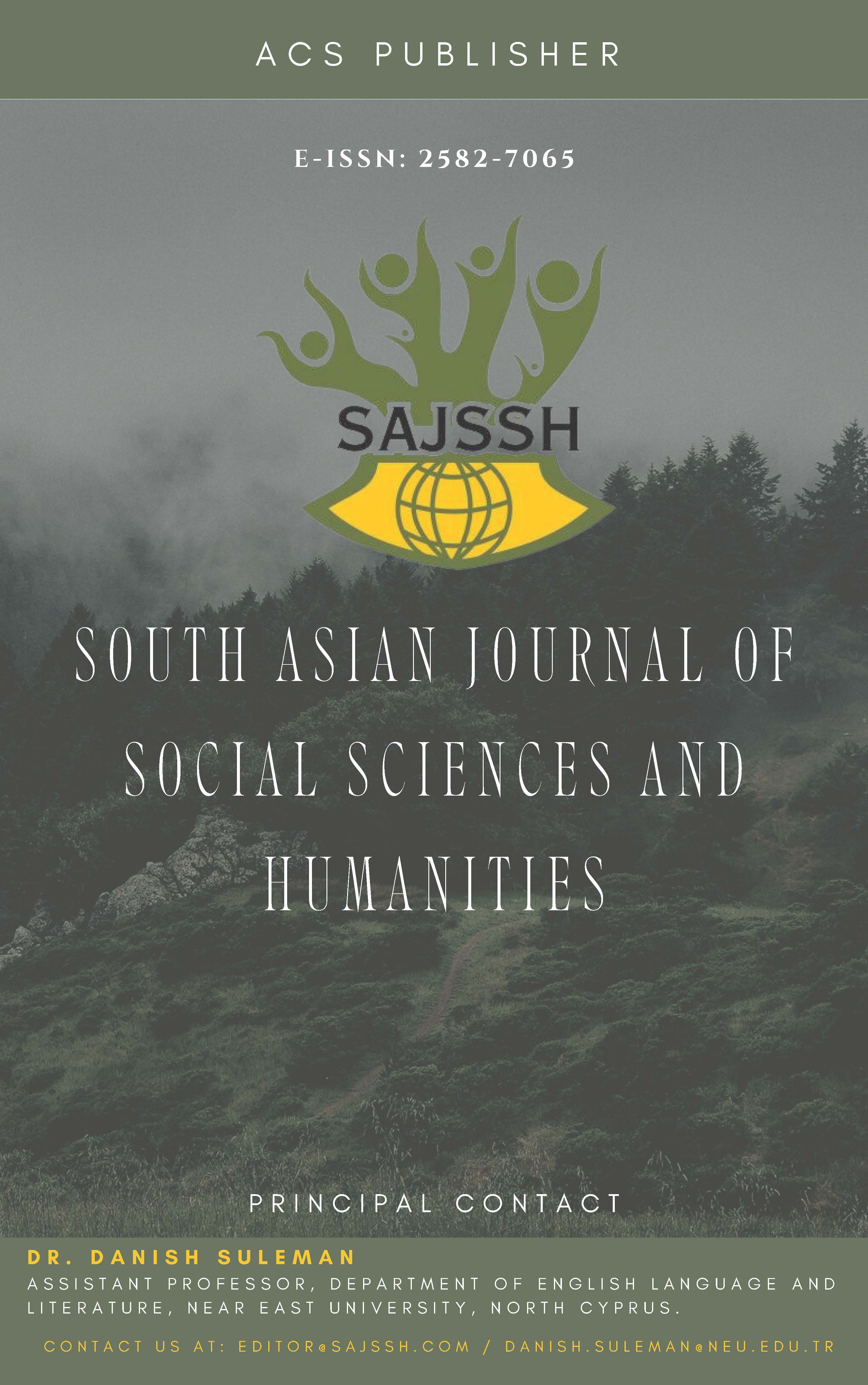C-Reactive Protein/Albumin Ratio as Predictor of COVID-19 Severity and Mortality
DOI:
https://doi.org/10.48165/sajssh.2024.6405Keywords:
CRP\Alb ratio, COVID-19, severity, mortality.Abstract
Background: Early detection of COVID-19 patients with a higher risk of infection advancement can help tailor treatment plans more specifically and ensure better allocation of healthcare resources. Both C-reactive protein also albumin serve as markers that are sensitive to inflammation. Study objective: evaluate the ability of CRP/ and Alb proportion in the prediction of cruelty and mortality of COVID-19 infection. Method: sample of 130 clients with COVID that confirmed outcomes entered the private nursing home \ medical city, Baghdad, Iraq, between January - October 2023. Patients are divided into mild, moderate and severe, and into dead and alive patients. To predict disease progression, CRP, albumin and CRP\Alb ratio were evaluated on admission. Results: A study of 130 patients with COVID-19 infection, mean age of (53.80 ± 16.33) years old, (48.5%) of patients are females, while (51.5%) of patients are males. (66.92%) of patients have severe infection, while (33.08%) of them have non-severe (mild and moderate) infection with COVID-19. High CRP\Alb ratio occurs more in severe COVID infection and those who died than in non-severe (mild and moderate) and those who were discharged alive, respectively. Conclusion: CRP/and albumin percentage may serve consider early indicator of the development of severe illness or death, offering a predictive biomarker to assess risk and guiding the clinical interventions of COVID-19 clients.
References
Agyeman, A. A., Chin, K. L., Landersdorfer, C. B., Liew, D., & Ofori-Asenso, R. (2020). Smell and Taste Dysfunction in Patients With COVID-19: A Systematic Review and Meta-analysis. In Mayo Clinic Proceedings (Vol. 95, Issue 8, pp. 1621–1631).
Ai, T., Yang, Z., Hou, H., Zhan, C., Chen, C., Lv, W., Tao, Q., Sun, Z., & Xia, L. (2020). Correlation of Chest CT and RT-PCR Testing for Coronavirus Disease 2019 (COVID 19) in China: A Report of 1014 Cases. In Radiology (Vol. 296, Issue 2, pp. E32–E40).
Barek, M. A., Aziz, M. A., & Islam, M. S. (2020). Impact of age, sex, comorbidities and clinical symptoms on the severity of COVID-19 cases: A meta-analysis with 55 studies and 10014 cases. In Heliyon (Vol. 6, Issue 12).
C‐reactive protein correlates with computed tomographic findings and predicts.pdf. (n.d.). Frontiers _ Impact of Age and Sex on COVID-19 Severity Assessed From Radiologic and Clinical Findings _ Cellular and Infection Microbiology. (n.d.).
Islam, M. A., Kundu, S., Alam, S. S., Hossan, T., Kamal, M. A., & Hassan, R. (2021). Prevalence and characteristics of fever in adult and paediatric patients with coronavirus disease 2019 (COVID-19): A systematic review and meta-analysis of 17515 patients. In PLoS ONE (Vol. 16, Issue 4 April).
Karakoyun, I., Colak, A., Turken, M., Altin, Z., Arslan, F. D., Iyilikci, V., Yilmaz, N., & Kose, S. (2021). Diagnostic utility of C-reactive protein to albumin ratio as an early warning sign in hospitalized severe COVID-19 patients. In International Immunopharmacology (Vol. 91).
Li, C., Zhao, C., Bao, J., Tang, B., Wang, Y., & Gu, B. (2020). Laboratory diagnosis of coronavirus disease-2019 (COVID-19). In Clinica Chimica Acta (Vol. 510, pp. 35–46). Lucijanic, M., Veletic, I., Rahelic, D., Pejsa, V., Cicic, D., Skelin, M., Livun, A., Tupek, K. M., Stoos-Veic, T., Lucijanic, T., Maglicic, A., & Kusec, R. (2018). Assessing serum albumin concentration, lymphocyte count and prognostic nutritional index might improve prognostication in patients with myelofibrosis. In Wiener Klinische Wochenschrift (Vol. 130, Issues 3–4, pp. 126–133).
Obaid, A. F., Shlash, A. M. J., Abdulrasol, Z. A., & Lafta, M. A. (2022). The consequences of COVID 19 and its vaccine on pregnant and lactating mothers. The Egyptian journal of immunology, 29(4), 58–74. http://dx.doi.org/10.55133/eji.290406
Salehi, S., Abedi, A., Balakrishnan, S., & Gholamrezanezhad, A. (2020). Coronavirus disease 2019 (COVID-19): A systematic review of imaging findings in 919 patients. In American Journal of Roentgenology (Vol. 215, Issue 1, pp. 87–93).
Saniasiaya, J., Islam, M. A., & Abdullah, B. (2021). Prevalence of Olfactory Dysfunction in Coronavirus Disease 2019 (COVID-19): A Meta-analysis of 27,492 Patients. In Laryngoscope (Vol. 131, Issue 4, pp. 865–878).
Talib, Amal & Al Sa'ady, Amal & Abdulrasol, Zainab & Obaid, Ali & Abdul-Amir, Hayder & Alhindy, Makki & Al-Mumin, Amir & Makki, Hayder. (2022). Prevalence of adverse effects from COVID-19 vaccine among Iraqi adults: A retrospective cross-sectional study. Journal of Emergency Medicine, Trauma and Acute Care. 3. 1-9. https://doi.org/10.5339/jemtac.2022.ismc.6 .
Page, J., & McKay, B. (2021). In Hunt for Covid-19 Origin, Patient Zero Points to Second Wuhan Market. In {WSJ} Online.
Zhou, F., Yu, T., Du, R., Fan, G., Liu, Y., Liu, Z., Xiang, J., Wang, Y., Song, B., Gu, X., Guan, L., Wei, Y., Li, H., Wu, X., Xu, J., Tu, S., Zhang, Y., Chen, H., & Cao, B. (2020). Clinical course and risk factors for mortality of adult inpatients with COVID-19 in Wuhan, China: a retrospective cohort study. In The Lancet (Vol. 395, Issue 10229, pp. 1054–1062).
Downloads
Published
Issue
Section
License
Copyright (c) 2025 South Asian Journal of Social Sciences and Humanities

This work is licensed under a Creative Commons Attribution 4.0 International License.





